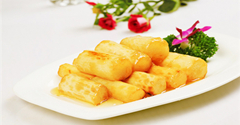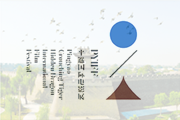News
Lament of the lens
Updated:2010-09-30 09:28By Raymond Zhou ( China Daily)


Chinese photo artists are increasingly engaged with contemporary realities, be it urban stress or fast-disappearing lifestyles, finds Raymond Zhou at the Pingyao photo festival
The grand prize in the 2010 Pingyao International Photography Festival that ran from Sept 19-25, goes to a set of photos about dilapidated industrial facilities and their equally haggard and soot-covered inhabitants. It is a fitting and subtle commentary on the former factory workshops where they were displayed and whose vibrancy can be detected only in a few pieces of machinery that now serve as interior decorations.
These Pingyao factories, including the diesel engine plant, the cotton textile mill and the knitwear mill, have long been defunct and now serve as the main exhibition areas for the photography festival, now in its 10th year. Middle-aged women who guard the galleries are better equipped to answer questions about the venues than the photos on show there.
When these factories were first constructed, they were meant to take the 2,700-year-old town into modernity. In much of China, these efforts did succeed, at least in crushing ancient city walls and swaths of old buildings. But in Pingyao, they merely stood as odd additions to the 2.25 square kilometer, 3,797-household town that was last rebuilt in year 1370.
Now that the factories have become relics themselves, the nondescript buildings and tall chimney are no longer the eyesores they used to be, but seem to have been absorbed into the tenacious landscape of antiquity, producing a picture of subdued contrast between past and distant past.
 |
| Age-old Pingyao is a perfect setting for an international photo festival. |
Hongjiang is an ancient town in Hunan province. Unlike Pingyao, it has not received its tourism makeover, or been restored to its former glory. But it has caught the attention of Ouyang Xingkai, whose lenses have recorded many facets of the ordinary lives of its residents.
These are old people whose faces, wrinkles and silvery hair tell of an age past. The posters on the walls are from the "cultural revolution" (1966-76); there is a home church where the choir is dressed like hospital staff; and most striking is an old lady using a walking stick next to a dozen coffins. The few signs of vivacity are a wall of posters, all with women in bikinis, but with a man lying on a bed in the foreground; another photo of a woman in bikini has her putting on makeup at home, and still another has a young woman walking down stone steps to a bunch of kids.
Even when images of youth and vibrancy emerge, they are usually those of the underclass. Kang Fuqi's Migrant Workers is just one of many that centers on this 100-million-plus group. The 20-something taking a shower with a makeshift showerhead has become such a ubiquitous image that it is dangerously close to a visual clich.
While established artists are taking their jobs as photojournalists seriously, others are molding their realism with a stronger personal imprint.
The Taiwan contingent, led by Chung Yung-ho, is a case in point.
"Ours is a culture of the ocean. We radiate to all sides and are not bound by anything. It is on a stage of the sea where we perform," Chung says, explaining the difference between Taiwan photographers and their mainland peers.
Chung's own works on exhibition at Pingyao are all about the sea and seaside scenes. But they are more philosophical than lyrical. Hung Chih-chieh has a series called Form, Color, Taipei, but his impressions of the city are distilled into geometric forms devoid of superfluous details.
Kao Cheng-chun points his camera at a butcher at work, but adds splashes of blood that elevates the mere description of a profession into ruminations on violence and human nature.
Chiu Kuo-chun names his collection of urban sexuality Something Unforgettable. It is set in a cheap hotel with splotches of red.
But instead of a real call girl, he uses a mannequin in various poses. To complicate it, for some of the photos he employs a real man - occasionally another woman - to interact with the fake one. The objectification of a certain type of woman almost jumps off the wall.
Cheng Yuyang, whose montage of black-and-white images called Return is among the winners in the art category this year, adds a twist to the traditional method of capturing life as it fades.
While his interest is also things that are vanishing, he deploys a faintly critical tone by keeping the negative image. Thus, trees and buildings take on a translucent look, turning into an eerily supernatural representation. He also deliberately misaligns the photos in a tableau to avoid the seamless effect that others strive for.
This kind of tinkering with life on the surface is visible in the new generation of Chinese photographers.
The exhibition devoted to college students, housed in the former knitwear mill, is eye-opening. They reveal, if not maturity, a boldness with technical experimentation that draws from foreign inspiration. The lines between photography and other art forms, such as behavioral art, are often blurred. The image of young men in bondage pops up more than once.
Dwelling Narrowness is the name of a television series that portrays young urban life, hard-pressed by skyrocketing real estate prices. Qu Yi, a graduate student at Taiyuan Polytechnic University, tackles the same subject matter, but with ideas from other places. His photos feature a male nude, surrounded by high-rises set in a circle - in a series that uses the same name and concept but various visual configurations.
The abundance of realistic or imaginative photographs at the festival is testament to the vicissitudes of life captured by the lens and the emotions invested by photo artists in this fast changing era.

Chinese yam cuisine in Pingyao
Restaurants in the Ancient City of Pingyao offer various Chinese yam dishes.


